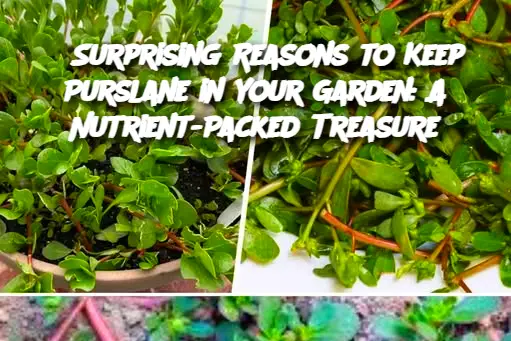Purslane Salad: Toss purslane with tomatoes, cucumbers, and red onions for a refreshing salad. Add a simple olive oil, lemon juice, and salt dressing for a perfect side dish.
Purslane Smoothie: Blend fresh purslane leaves with fruits like pineapple, banana, and a little honey for a nutritious green smoothie that boosts your intake of vitamins and antioxidants.
Purslane Stir-Fry: Sauté purslane with garlic, chili, and a bit of soy sauce or tamari for an easy, savory side dish. You can also combine it with other greens like spinach or kale for a heartier meal.
Purslane Soup: Add fresh purslane to your favorite vegetable soup recipe. It works well in a clear broth-based soup or as a fresh garnish to creamy soups.
FAQ (Frequently Asked Questions)
Q: Is purslane safe to eat?
A: Yes, purslane is completely safe to eat. In fact, it has been consumed in various cultures for centuries. However, it’s important to ensure that any purslane you harvest hasn’t been sprayed with pesticides or grown in contaminated soil.
Q: Can I eat purslane raw?
A: Yes, purslane can be eaten raw, and it’s often used in salads. Its slightly tangy taste pairs well with a variety of fresh vegetables and dressings.
Q: What are the health benefits of purslane?
A: Purslane is highly nutritious, packed with omega-3 fatty acids, antioxidants, fiber, and a variety of essential vitamins and minerals. It helps improve heart health, reduces inflammation, boosts digestive health, and supports skin and eye health due to its vitamin A and C content.
Q: How can purslane help with joint health?
A: Purslane contains polyphenols, which have anti-inflammatory properties. This makes it beneficial for reducing inflammation in the body, including the joints, and may help manage conditions like arthritis.
Q: Can I grow purslane in my own garden?
A: Yes, purslane is easy to grow and can thrive in a variety of climates, especially in hot, dry conditions. It’s a hardy plant that requires minimal care, making it an excellent addition to any garden.
Q: Is purslane a good source of omega-3 fatty acids?
A: Yes, purslane is one of the few plants that contain a significant amount of omega-3 fatty acids, specifically alpha-linolenic acid (ALA). This makes it a valuable addition to a plant-based diet for supporting heart health and reducing inflammation.
Conclusion
Purslane is much more than just a weed—it’s a highly nutritious, versatile plant that can enhance your diet and improve your health. Packed with omega-3 fatty acids, antioxidants, and vitamins, purslane supports heart health, joint function, and overall well-being. Instead of pulling it out from your garden, consider embracing this garden treasure. Whether you use it in salads, stir-fries, soups, or smoothies, incorporating purslane into your meals can be a delicious and easy way to boost your nutrient intake. So, next time you spot purslane in your garden, remember—this humble plant is a powerhouse of nutrition just waiting to be enjoyed!
ADVERTISEMENT

